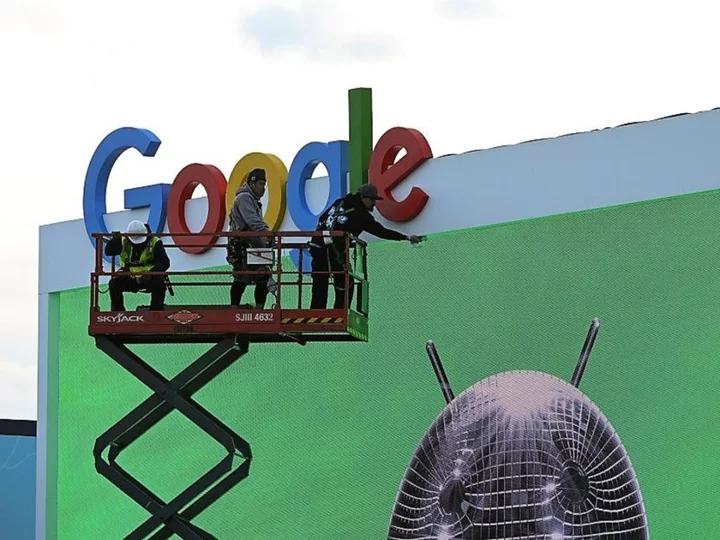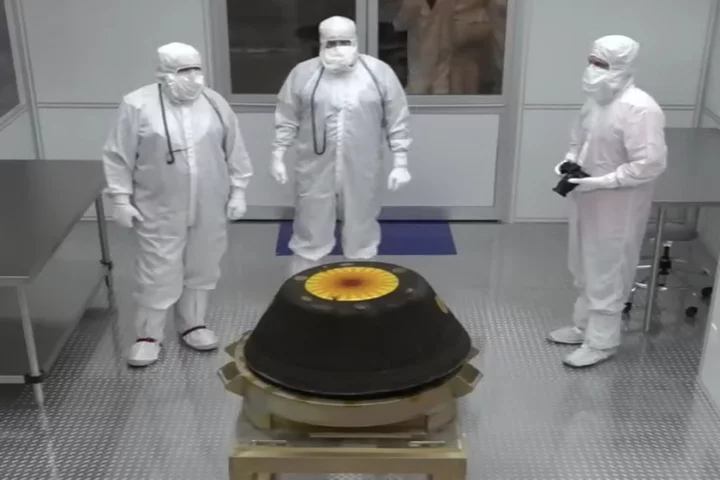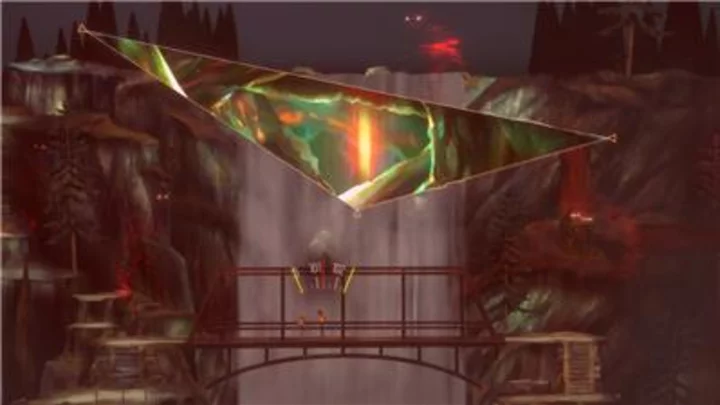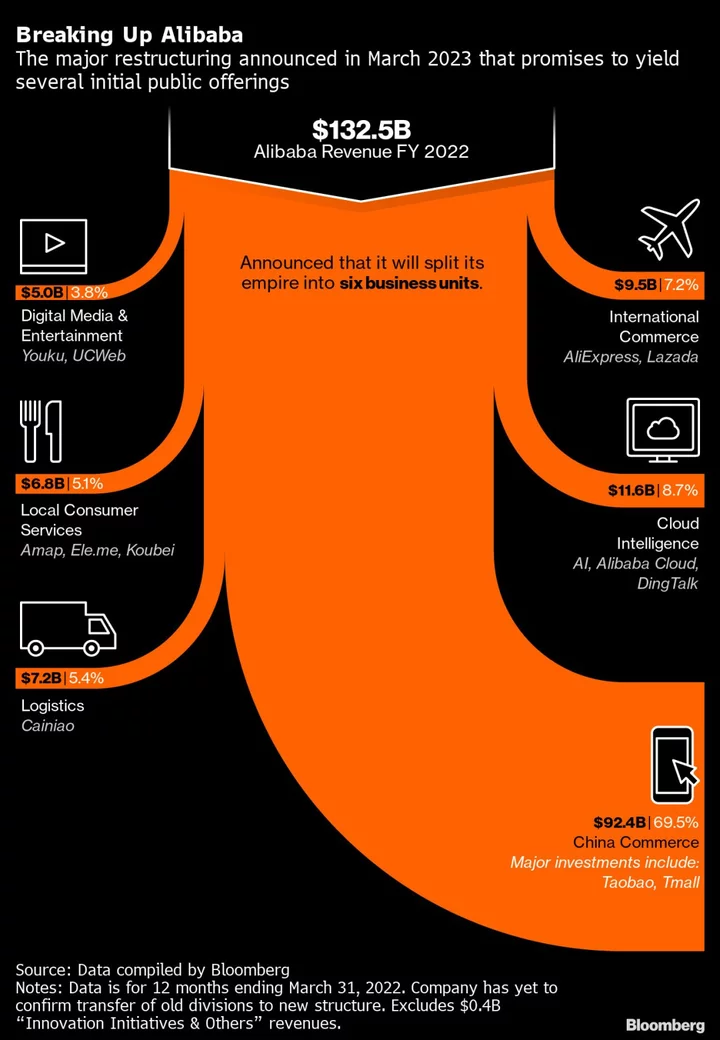
Marvel told to 'do better' for using AI for 'Secret Invasion' opening sequence
Marvel’s latest series, Secret Invasion, is making waves on the internet – though the studio may not be best pleased when it finds out why. Director Ali Selim was greeted with anger from fans after revealing that the opening credits were generated by artificial intelligence. However, he said that the idea of using AI for the sequence, designed by Method Studios, fit into the themes of the show. Sign up to our free Indy100 weekly newsletter He said: “When we reached out to the AI vendors, that was part of it – it just came right out of the shape-shifting, Skrull world identity, you know? Who did this? Who is this?” Selim admitted that he does not “really understand” how the AI works, only that he was interested in it. He said: “We would talk to them about ideas and themes and words, and then the computer would go off and do something. And then we could change it a little bit by using words, and it would change.” The resulting social media backlash was largely around the fact that using AI likely meant graphic designers and animators, who usually craft opening credits, were cut out of the loop. The revelation comes as the Writers’ Guild America is on strike after negotiations with the Association of Motion Picture and Television Producers collapsed. Part of the negotiation was over protecting writers against the use of AI in the creative process. It means that over the last two months, the use of AI to replace humans in creative jobs has been at the forefront of discussions around the strike. Jon Lam, a storyboard artist, wrote on Twitter: “This is salt in the wounds of all Artists and Writers in the WGA strike.” Another person wrote: “I really loved the first episode of Secret Invasion but them using AI ‘art’ for their intro is just wack. Do better Marvel.” Have your say in our news democracy. Click the upvote icon at the top of the page to help raise this article through the indy100 rankings.
2023-06-22 23:45

South African Plan Paves Way for $80 Billion Energy Transition
An $80 billion South African investment plan to begin transitioning the economy away from fossil fuels over five
2023-11-28 15:47

Alibaba Unit to Hire 2,000 Graduates as Big Tech Crackdown Eases
Alibaba Group Holding’s e-commerce arm in China is hiring more than 2,000 graduates amid record youth unemployment and
2023-08-19 13:59

Villanova University Names Raymond D. Duffy Vice President for Human Resources
VILLANOVA, Pa.--(BUSINESS WIRE)--Jun 21, 2023--
2023-06-22 01:59

Musk Assures Netanyahu He Is Against Antisemitism
Elon Musk opened up a discussion with Israeli Prime Minister Benjamin Netanyahu by staunchly defending himself against accusations
2023-09-19 04:53

Skyflow Launches On AWS Marketplace
PALO ALTO, Calif.--(BUSINESS WIRE)--Jul 27, 2023--
2023-07-28 05:19

Google I/O 2023 live: Major AI news expected alongside new Pixel devices
Google is set to unveil its latest artificial intelligence offerings at its annual developers conference on Wednesday, alongside new products ranging from Pixel phones to the Android 14 operating system. Google I/O 2023 will offer Alphabet the chance to show what its massive investments into AI have delivered, as it seeks to take on OpenAI’s hugely popular ChatGPT chatbot. Integration of its Bard AI in to its Maps, Gmail and search is expected, while various leaks have hinted that the company will also launch a large language model (LLM) called PaLM 2, capable of operating in more than 100 languages. This AI tool is rumoured to be able to pass exams in everything from computer coding and mathematics, to creative writing and critical thinking. A live stream of the keynote will be available when it begins at 10am local time (6pm BST), which you can watch right here. Until then, you can follow all the latest news, updates and analysis in our build-up coverage below.
2023-05-10 18:17

Japan’s Kishida to Seek Asset Management, Pension Fund Reform
Japanese Prime Minister Fumio Kishida will prod asset managers to improve their skills and strengthen governance, as he
2023-10-02 17:17

Apple Is Working on a Revamped iPad Pro
Apple is reportedly working on a brand new version of the iPad Pro, but you’re
2023-08-28 07:58

Does Super Mario Bros. Wonder Have a Multiplayer Mode?
Players want to know if there's a multiplayer mode in Super Mario Bros. Wonder.
2023-10-25 06:19

German Government to Approve Climate Fund Boost to €212 Billion
Chancellor Olaf Scholz’s government will on Wednesday approve a top-up of Germany’s special Climate and Transformation Fund by
2023-08-09 14:48

Nasa has gathered a large piece of a distant asteroid. What now?
Scientists have gathered a significant chunk of a distant asteroid, which has made its way to Earth after a mission taking millions of miles. But the really useful work will begin now. Nasa’s Osiris-Rex mission flew to the distant Asteroid Bennu, scooped up a piece of the object into a canister, and then flew back to Earth to drop it off. On Sunday, Nasa picked up that canister in the Utah desert and is now working to secure it. It will then send those samples to a variety of scientists around the world, with a chunk of it being sent to more than 200 people at 38 different institutions across the world. They hope that they can use them as a “time capsule” to peer into the early universe, telling us about where we came from. “This box when it is opened of material from the surface of Bennu can tell us untold secrets of the origins of the universe, the origins of our planet and the origins of life itself,” said Queen musician Brian May, who helped with the research by mapping out the asteroid to find a landing spot. “What an incredibly exciting day.” Sample return missions are particularly exciting to scientists because they offer a look at a pristine piece of a distant world that has been undisturbed by the environment on Earth. While some pieces of asteroids and other objects can fall down to Earth, they have to make their way through the atmosphere and can be damaged and changed in the process. They also mean that researchers are able to use all of the Earth’s latest technology to study the sample. Other pieces of distant worlds have of course been studied by spacecraft and landers, but they are only able to do so with the limited instruments they take to those planets. Another advantage of sample return missions over studying the objects at their home is that scientists can look back at those samples with new sensors and equipment invented long after the sample was actually taken. Many space missions continue for years – Curiosity is still examining Mars after arriving there in 2012, and the Voyager probes are still providing information almost 50 years after they were launched – but they are only able to do so with the technology that was available when they set off. The analysis done in sample return missions really begins when the spacecraft arrives at its target: then, it starts looking at the context of the sample, gathering information about the world from which it came that should prove useful to scientists later. Osiris-Rex arrived at Bennu in 2018, and spent two years mapping the asteroid before it set off back home with its delivery. All of that information in addition to the samples could help answer a variety of questions about our planet, scientists hope. “The asteroids in our solar system contain the raw building blocks from which the Earth was made, so working out their composition will tell us a lot of how our planet formed,” said Boris Gansicke from the department of physics at the University of Warwick. “There are many open questions, for instance, where did the water that we have on Earth come from? And where did the ingredients that made life possible to develop come from? “To answer those questions, ie measure the composition of an asteroid, you need to get your ‘hands’ on them (or in this case the arm of a space mission), and this is what Osiris-Rex achieved. “In a nutshell, it’s similar to sitting in front of a delicious dinner and wanting to have the list of ingredients.” Sample return missions are almost as old as space travel itself, and the first of them were the early Apollo missions, which brought back pieces of the Moon. Those continue to be useful to scientists. Since then, as human travel into space has declined, most of the work has been done by robots. In the early 1970s, the Soviet Union’s Luna missions gathered pieces of the Moon and brought them back, and in 2020 Japan’s Hayabusa2 mission brought back pieces of the asteroid Ryugu. Scientists have high hopes for future missions: perhaps the most discussed is a mission to Mars, which would bring back the first ever pieces of that planet. Engineers have suggested that for decades, and a number of plans have been formed, but none are likely to launch any time soon. Read More Nasa spots shocking number of galaxies like our own Nasa lands Bennu asteroid samples back on Earth Nasa just delivered a piece of a distant asteroid to Earth Pieces of a distant asteroid are about to fall to Earth Nasa to return largest asteroid sample ever as UK helps with research Massive solar flare strikes Nasa spacecraft sent to study Sun
2023-09-26 00:45
You Might Like...

Nintendo Download: We Interrupt This Broadcast To Bring You…

KRAFTON Set to Officially Launch Defense Derby Worldwide on August 3

Alibaba Cloud Eyes State Firms for Up to $3 Billion Fundraising

Google to Pay Texas $8 Million to Settle Deceptive Pixel 4 Ad Claim

Microsoft's Bing, LinkedIn vows more ads transparency

3 Google Pixel 8 rumors ahead of its October reveal

Scientists believe close kilonova explosion could threaten all life on Earth

YouTube’s recommendations send violent and graphic gun videos to 9-year-olds, study finds
